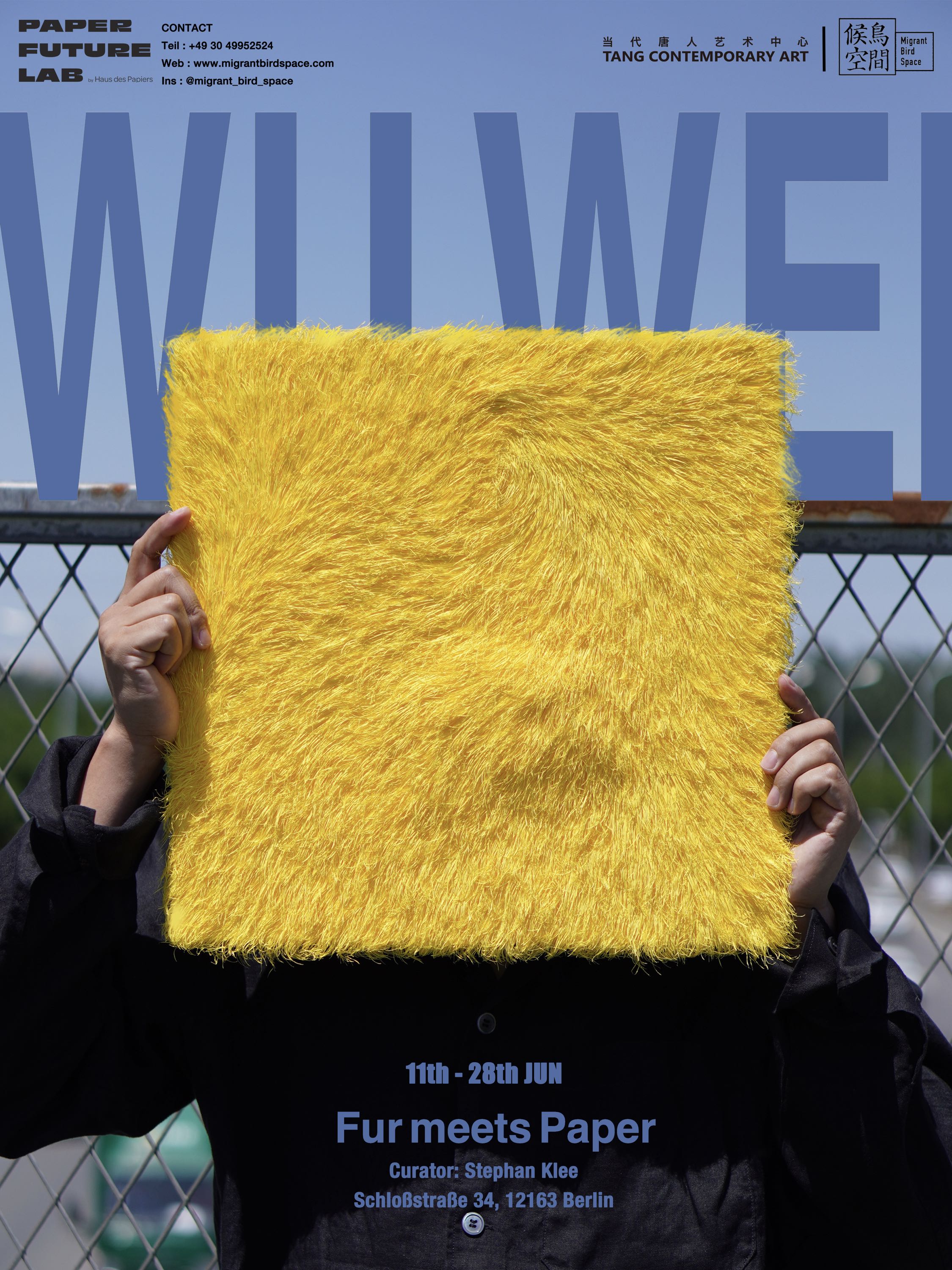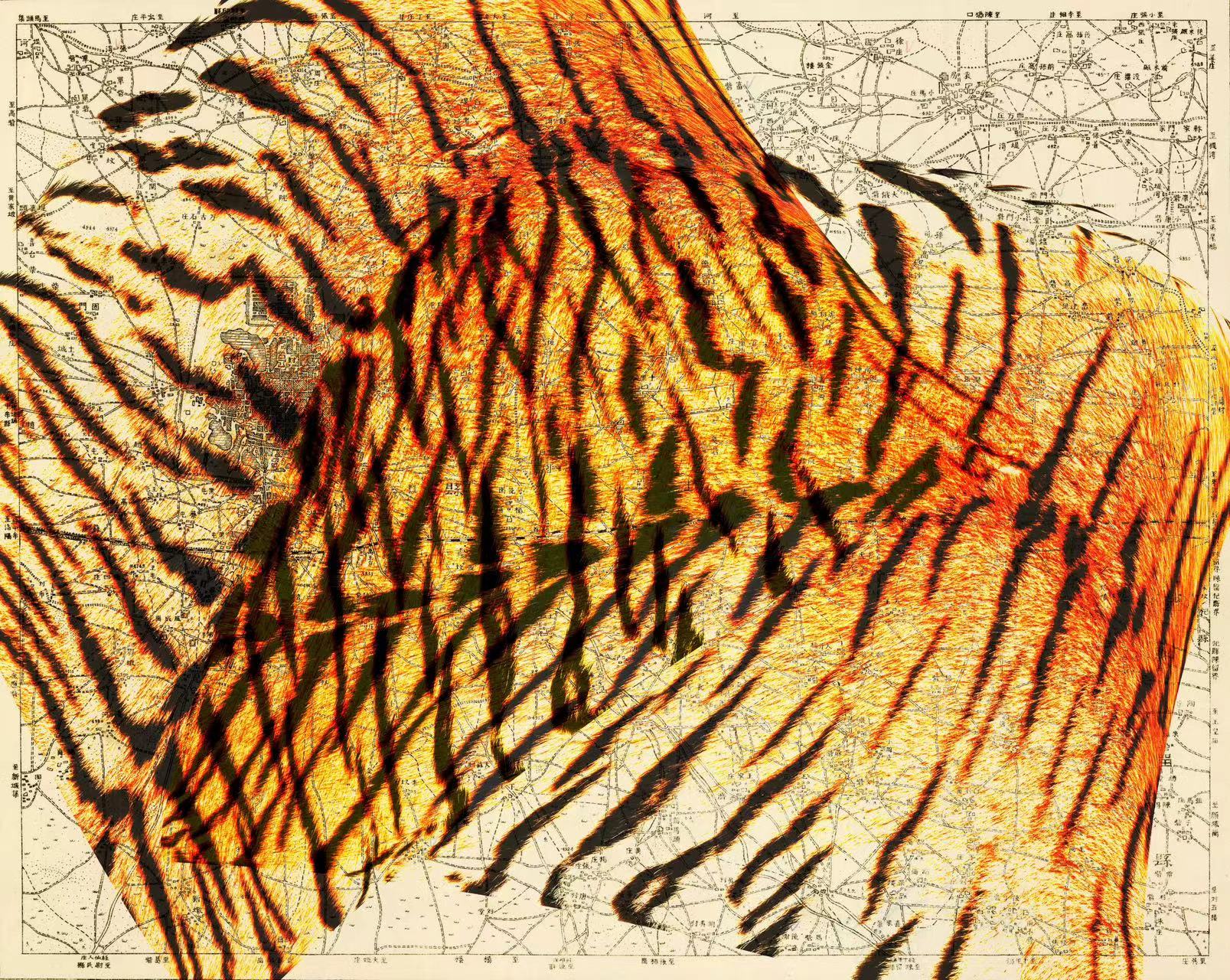Wu Wei, an artist exploring the essence of materials, delves into the profound through his art. His "Paper Fur" series epitomizes this exploration, redefining material properties. Through societal collaboration and craftsmanship, paper fur embodies organic vitality and structured rationality. It's a fusion of sociology, artistry, and craftsmanship, ingrained in paper's consciousness.
In "Body Reading" and "Sacred Anatomy," Wu Wei revitalizes classical imagery, infusing it with contemporary significance. Through dynamic techniques like painting, drawing, and collage, he breathes new life into ancient forms, exposing societal violence and fragility. The series navigates the intersection of classical and modern, symbolizing the passage of time and unresolved human issues.
"Skin and Texture" introduces a novel genre where wax dripping on animal skin triggers introspection and reconciliation. Arabic patterns intertwine with contemporary thought, evoking symbolism and infinite spiritual realms. This convergence of ancient beliefs and modern expression communicates hope amidst historical heaviness.
Wu Wei's works challenge tradition and provoke contemplation, exploring human anatomy, psychology, and spirituality. Through the synthesis of science and art, he unveils the beauty and mystery of the human form, inviting viewers into a world of profound reflection.
The exhibition, in collaboration with Tang Contemporary, will showcase a new series of works by Wu Wei in Berlin. We will present the artist's latest collection comprising 20 pieces. Wu Wei's artworks have garnered significant attention in the Asian art market.
Project Location:Grunewald Str. 3, 12163 Berlin, Room:1.10.4
Opening: 11/06/2024, 6-8pm
Exhibition: 11-28/06/2024
Opeing hours: 8am-8pm, Monday- Saturday
The Book of the Yellow Emperor says: ‘But the unborn is basically not unborn, the shapeless is basically not shapeless’— philosopher Lieh-Tzu 列 子 (around 450 BC)
Imagine you shred several books of Tibetan buddhist writings, would the valuable information be lost forever as illegible, chaotic fibres of paper without any meaning? Or would this shredded fur in white and black bare the potential for a meaning, for a transformed, alternatively generated information? And if the latter is true, what type of information could this eradicated matter offer you now?
One ongoing, underlying dynamic, which defines the world, particularly in human perception, is the transformation from chaos to order and back to chaos. May one refer to the dualisms of potential and being, of dark matter and matter, of liquidity and solid form, of wild life and civilisation or of white noise and information, the list of examples for theses seemingly self-driving interchanges is long. Religion, philosophy and science around the world and at all times
face this elementary relationship of existence. Especially in traditional Chinese Mythology, philosophy, writing and art is a high awareness, a deep contemplation and a unique knowledge that the existing is not possible without the non-existence and meaning is not possible without enigma.
„As there is nothing from the first, where does the does the dust itself collect?“
„本来无一物,何处惹尘埃“
Zen master Huineng (638-713 AD)
Maybe relying on these cultural sources, but also based on his unquenchable interest in global cultural history the Chinese Artist Wu Wei (*1981) has developed an outstanding way of challenging these existential questions in a conceptual and formal way. Primary introducing paper as a metaphor for the traditional medium of information, culture and civilisation he scrutinises the durability of these values by exactly doing the first mentioned: cutting books and paper in a traditional Chinese way into a very fine fibres. The variations of the resulting material are full of different volumes and densities and Wu uses the embroidery techniques of Tibetan thangka-paintings to colour the mesh in a sustainable way. The results of this procedure turn out as undulating bodies of colourful fur seemingly growing from the surface. These fur bodies literally appear active: as if they would react to the breezes of the activities in their direct environment, and as if they would still grow or better overgrow surfaces and objects by their genuine impulse. Getting the point here: this special web seems to be alive, it works as a sort of active, cell-dividing texture spreading the artistic message of its author. It establishes a kind of personal medium; flexibel applicable, very appealing, recognisable but still full of meaning.
Wu utilises this unique quality to deconstruct the ontological status of forms, shapes, images and objects. No matter they might be books, paper-stacks, wall-plates, figuratives sculptures and old master painting, press photos or everyday objects like car parts and body,
the fur overgrows and permeates the items, dissolving their forms and functions like a purifying matrix for the erasure of familiar cultural standards. Form and Message are no clear any longer, texture and expression open up their once defined semantic relation in a very generating way: a refusal of known matter, a fresh nourishing soil for new things to come. From this perspective Wu Wei is a big sceptic of the retracted conditions of our current times, but also a messenger of trust in regenerating power of the „no order zone“ of our existence – some might call it chaos, other might call it creativity.
 Text by- Stephan Klee
Text by- Stephan Klee

